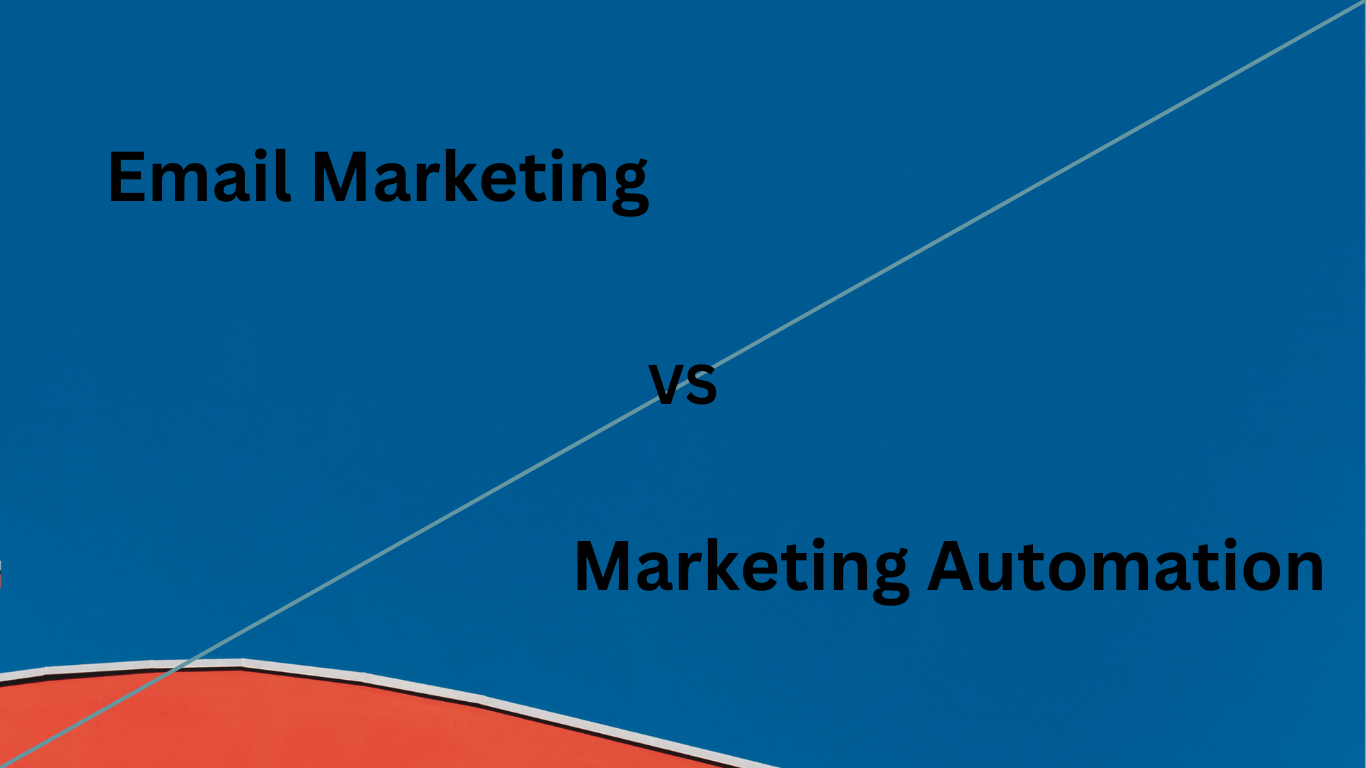
Email Marketing is one strategy that has proven effective in increasing a business’s reach. This digital marketing method involves sending targeted emails to potential customers to promote a product or service.
Marketing is a crucial aspect of any business that aims to communicate its brand message, amplify audience reach, and increase sales. With marketing, companies can effectively get their target customers or differentiate themselves from competitors. For example, a new tech start-up might have a great product, but failing to promote its brand could result in little to no audience awareness, low sales, and eventual failure.
As a business owner, it’s essential to have an effective and efficient marketing strategy to reach your target audience and maximize profitability. But with so many different techniques to choose from, which one should you prioritize? Email campaigns and marketing automation are two of the most popular options, but what exactly do they involve, and how can they benefit your business?
In this blog post, we will go through the differences between email marketing and marketing automation, analysing each approach into its various key features and components, its pros and cons, and the situations in which one technique is more appropriate than the other. Ultimately, we will help you make an informed decision regarding which technique could be best for your company to achieve maximum ROI.
Understanding Email Marketing
Email marketing is a powerful digital marketing strategy used to promote products and services, and engage with customers through emails. Understanding how this technique works and how marketing it will help you maximize ROI from your campaigns and achieve success in the long run. This approach is suitable for businesses with low budgets and with low-value products where emails are sufficient means for convincing customers to make a purchase.
What is Email Marketing, and why is it essential for business?
As discussed, marketing is a cost-effective and powerful marketing strategy that involves reaching out to potential and existing customers through email. It involves promotional emails, newsletters, and offers sent to subscribers who have provided their email addresses to receive such messages. Email marketing is an essential tool for businesses, as it helps to build relationships with customers, increase brand awareness, and drive sales.
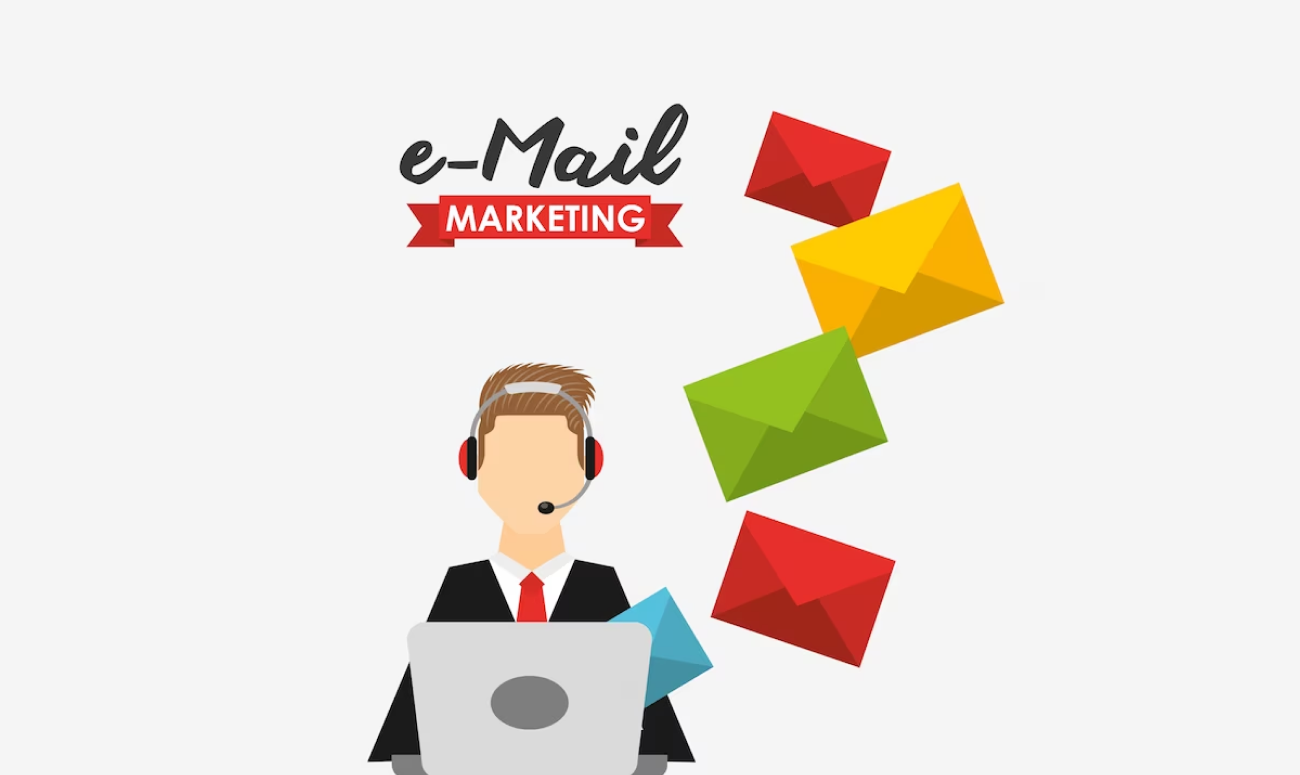
Email marketing software works by enabling businesses to create and send emails to their subscribers, manage their email lists, and track the performance of their campaigns. The software also provides key features, such as autoresponders and analytics tools, which help businesses to automate their emails and gain insights about the effectiveness of their campaigns. But the lack point is marketing is restricted to emails only and the insights they provide are limited. To get more insights and measure the success of your email marketing campaign, consider integrating other channels such as social media, search engine optimization (SEO), and content marketing into your digital strategy.
Why is it essential for business?
Email campaigns is vital for business as it helps build customer relationships, increase brand awareness, and drive sales.
Email campaigns are targeted, data-driven, personalized email communications designed to drive customer engagement and sales.
Marketing teams use email campaigns to generate leads, promote products and services, and build brand loyalty. Email marketing is also an effective tool for lead generation and management, as it allows businesses to segment their email lists and send targeted messages to specific groups of subscribers.
In the Email campaigns processes, sales and marketing processes are closely related. For example, marketing teams automate email marketing to automate email campaigns that raise brand awareness and generate leads, while sales teams use email to follow up on leads and convert them into customers. By sharing data and aligning their efforts, sales and marketing teams can work together to create effective automated email campaigns and trigger automated email sequences.
Email marketing CRM platform(customer relationship management) has become an indispensable marketing tool for businesses of all sizes. It offers a cost-effective way of reaching a wide range of audiences and driving conversions and revenue. However, like any marketing strategy, email marketing has pros and cons. Here, we will explore the advantages and disadvantages of email marketing in detail.
PROS:
Low Cost: One of the most significant advantages of email marketing is that it is inexpensive compared to any other touchpoint and marketing channel. It only requires an email list and an email marketing tool, making it a practical option for small businesses with limited budgets.
Targeted Audience: Email marketing allows businesses to send personalized and targeted customer messages. This targeting can be based on specific demographics, previous purchases, or browsing behavior, making the content more relevant and engaging for the audience.
Measurable Results: Email marketing is easily measurable, allowing businesses to track open and click-through rates per user name, conversion rates per user, and other metrics. Companies use this data to optimize future campaigns and improve overall performance.
High ROI: Email marketing is the most effective way to generate leads and increase sales. It offers higher ROI than many other forms of marketing and can be used to maximize return on investment (ROI).
Increased Sales: Email marketing drive sales and revenue, especially when combined with other marketing platforms. Personalized and engaging emails lessen the effort of sales reps and can increase traffic and conversions, ultimately generating more revenue. With in-built email templates, businesses can save money and time.
CONS:
Email Deliverability: A significant disadvantage of email marketing is the issue of deliverability. Many email providers have spam filters that can prevent emails from reaching the intended recipients. That can be particularly challenging for businesses that rely heavily on email marketing.
Unsubscribes: Email marketing can often lead to a high number of unsubscribers, which can be detrimental to the email list’s overall health. To avoid this, businesses should send relevant and valuable content to their subscribers.
Limited Creativity: Unlike other marketing channels, email marketing offers little creativity due to its text-based format. Businesses must find creative ways to make email templates to make dynamic content in their emails stand out while maintaining branding and messaging.
Risk of spamming: Businesses must send only a few emails or chance of being flagged as spammers. This spamming could lead to decreased engagement, deliverability rate, and even legal repercussions.
Time-Consuming: Crafting effective email marketing campaigns can be time-consuming, from designing email templates to writing compelling copy. For businesses with limited resources, this can be a challenge.
In conclusion, email marketing has its pros and cons. However, email marketing tool remains a valuable to help businesses reach their target audience, drive conversions, and increase revenue. By delivering relevant and engaging content, companies can build a strong and loyal email list that brings consistent results.
A recent study related to email marketing revealed that personalized email campaigns could increase open rates by 29% and click-through rates by 41%. The study also found that segmentation and targeting are critical to the success of email marketing campaigns.
The complete study can be found at this link: https://www.campaignmonitor.com/resources/guides/email-marketing-benchmarks/
In conclusion, email marketing is crucial to businesses as it enables them to create and execute targeted campaigns that generate leads, build customer loyalty, and boost sales. In addition, an email marketing system empowers businesses to automate their email campaigns and track their real-time performance. Although email marketing has pros and cons, a properly executed email marketing campaign can increase brand awareness, customer engagement, and revenue for businesses.
How to Build an Email Marketing Campaign?
There is much competition and clutter in the inbox, and building a successful email marketing campaign requires careful planning, execution, and automated data entry and analysis. This article will outline key steps to help you create and automate email marketing campaigns, to boost lead generation and qualified leads.

Step 1: Define your goals and target audience
Before creating your email marketing campaign, defining your goals and target audience is essential. For example, who do you want to reach with your campaign? Do you want to increase sales, build brand awareness, or drive website traffic? Defining your goals will help you create a more targeted and effective campaign.
Step 2: Build your email list
Once you have defined your goals and target audience, you must build your email list. This can be done by collecting email addresses through your website, social media channels, events, web forms, and other marketing channels. Getting your subscribers’ permission and ensuring they have opted-in to receive your emails is essential.
Step 3: Create compelling content
The success of your email marketing campaign depends on the quality of your content. Your content should be relevant, informative, and engaging for your target audience. Consider using images, videos, and other visual elements to make your content more engaging. Also, ensure your email is mobile-friendly, as more and more people access it on their mobile devices.
Step 4: Personalize your emails
Personalization is critical to building a successful email marketing campaign. Use your subscriber’s name in the subject line and throughout the email. Segment your email list based on demographics, interests, and behaviors to deliver more personalized content. That can help improve open rates, click-through rates, and conversions.
Step 5: Test and optimize
Finally, it’s essential to test and optimize your email marketing campaign. Monitor your open rates, click-through rates, and conversions, and adjust your content, timing, and segmentation accordingly. Test different subject lines, images, and calls to action to see what works best for your audience.
Additionally, Email templates can be a great way to create effective and efficient email marketing campaigns. With in-built email templates(with drag and drop option), businesses can save time by creating automatically personalized and tailored messages for their target audience.
How to Measure the Success of Your Email Marketing Campaign?
Email marketing has become an essential strategy for businesses today, and measuring the success of your email marketing campaign is a critical step to understanding the ROI of your marketing efforts. With the increasing importance of email marketing tools, it is essential to understand the metrics that can measure its success.

Firstly, one of the most common metrics used to measure the success of an email marketing campaign is open rates. Open rates measure the number of people who opened your email. A high open rate indicates that your subject line was compelling enough to get your recipients to open your email. The industry average open rate is around 22%, depending on your industry and target audience.
Another crucial metric to consider when measuring the success of your email marketing campaign is click-through rates. Click-through rates measure the number of people who click on a link or button within your email. A high click-through rate indicates that the content of your email was valuable and relevant to your recipients. The industry average click-through rate is around 2.5%, with the highest-performing industries, such as finance and insurance, averaging around 4.19%.
Conversion rates are also essential to consider when measuring the success of your email marketing campaign. Conversion rates measure the number of people who completed a desired action, such as making a purchase or filling out a form, after clicking through an email. A high conversion rate indicates that your email successfully motivated your recipients to take action. The industry average conversion rate is around 1.84%, which can vary depending on your industry and target audience.
Lastly, it is essential to consider the overall return on investment (ROI) of your email marketing campaign. ROI measures the amount of revenue generated from your email campaign compared to the cost of the campaign. A high ROI indicates that your email campaign successfully achieved its intended goals. According to a study by Litmus, email marketing has an average ROI of $38 for every $1 spent, making it an incredibly effective marketing strategy.
In summary, measuring the success of your email marketing campaign requires tracking key metrics such as open rates, click-through rates, conversion rates, and ROI. By analyzing these metrics, businesses can understand the effectiveness of their email marketing campaigns, identify areas for improvement, and ultimately achieve better ROI.
Understanding Marketing Automation
Marketing automation gives businesses a powerful multi-channel approach to send automated emails and other messages to customers, prospects, and leads. It is not restricted to emails only rather marketing automation offers an array of marketing features to leverage. Features like segmentation, automated workflows, sales pipelines, landing pages, reporting, and analytics can help to deliver targeted messages that are more likely to drive conversions. With marketing automation, companies can customize their messages based on customer information such as purchase history, behavior, preferences, and interests.
What is Marketing Automation, and why is it essential for business?
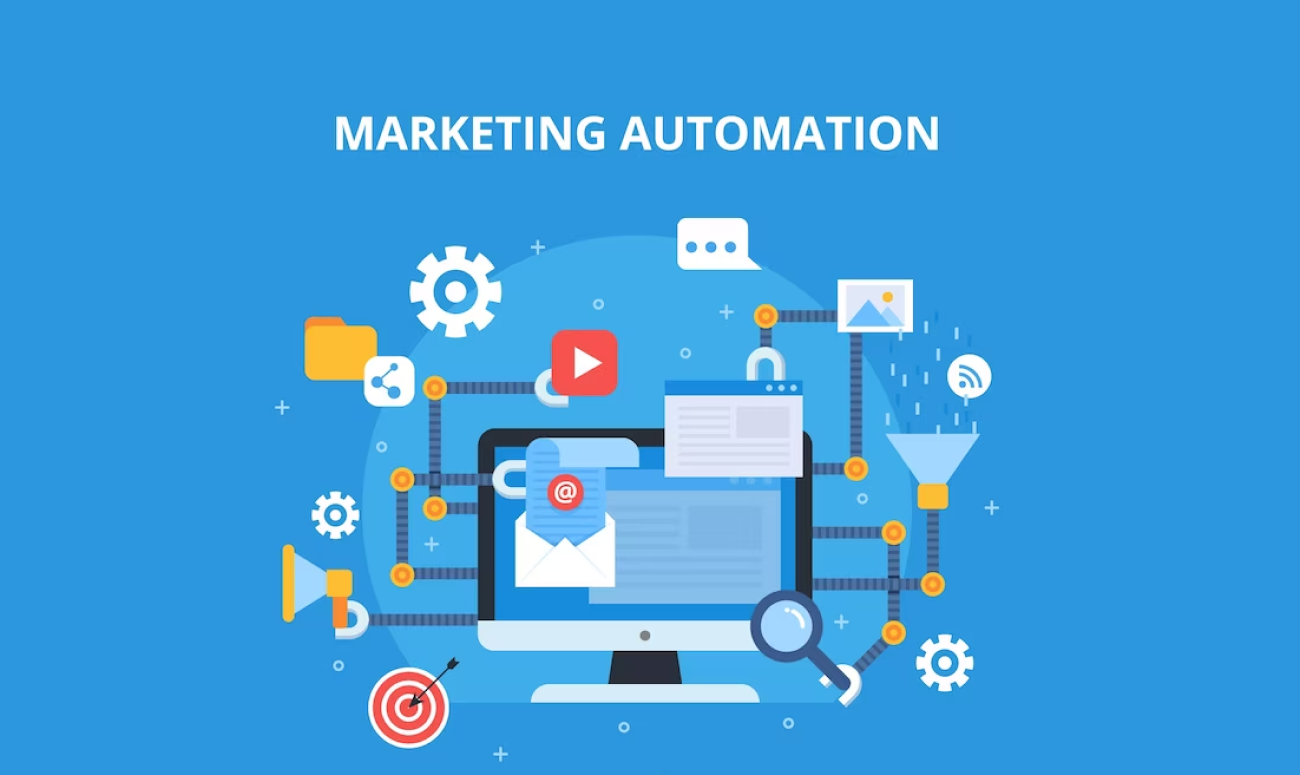
Marketing automation platforms and tools automate repetitive marketing tasks and ensure businesses don’t miss leads. It is an essential tool for companies looking to save time and resources while improving their marketing and sales efforts.
Marketing automation platforms also allow businesses to use various marketing channels to reach their target audience, with automated campaigns on platforms such as email, social media, website ads, SMS, and telephone, to reach potential customers and nurture them into qualified leads. In addition, companies can tailor these campaigns to specific customer segments to ensure they receive relevant and timely marketing messages.
For example, consider a business that offers software solutions for small businesses. The business might use landing pages to capture the contact information of interested individuals. Once leads submit their details, the business can use automated workflows to send out a series of emails or SMS messages, highlighting the benefits of their software and encouraging the recipient to take further action.
As the leads engage with the email sequence or SMS messages, their activities are tracked and scored through lead scoring, which makes it easier to identify those who are most likely to convert into customers. Once a lead has surpassed a certain score threshold, they are passed to the sales team, who can begin the process of converting them into paying customers.
Throughout this process, workflow automation is used to automate various repetitive tasks, such as sending out follow-up emails or updating customer records. This frees up time for marketing and sales teams to focus on more valuable activities, such as building relationships with potential customers and closing deals.
In addition to these methods, social media is another important channel for reaching and engaging with potential customers. By regularly posting valuable content on social media platforms such as Facebook, Instagram, and LinkedIn, businesses can attract new leads, build brand awareness, and engage with their existing customer base.
Overall, marketing automation is a powerful tool for businesses of all sizes, allowing them to streamline their marketing efforts, gain valuable insights into customer behaviour, and ultimately, drive revenue growth.

However, like any tool, marketing automation has pros and cons. Let’s take a closer look at both:
Pros of Marketing Automation:
Increased efficiency: By using automation, companies can reduce the manual effort required to execute repetitive tasks, such as sending emails or posting on social media. This allows marketers to focus on more strategic efforts, such as campaign planning and analysis.
Personalization: Marketing automation allows companies to deliver personalized content, such as targeted emails or website recommendations. This can increase customer engagement and ultimately lead to more sales.
Improved lead nurturing: Marketing automation can help nurture leads over time, sending targeted messages to customers who seem interested in a company’s products or services. This can increase conversion rates and drive revenue.
Data-driven decision-making: Companies can make more informed decisions about their marketing strategy by collecting and analyzing data from marketing automation tools. This can lead to better ROI and overall effectiveness.
Cons of Marketing Automation:
Complexity: Implementing and managing marketing automation tools requires significant technical expertise. This can be a barrier to entry for smaller businesses or those with limited resources.
Over-reliance on technology: Companies need to rely more heavily on automation to avoid losing the personal touch that can be essential to building customer relationships.
Potential for errors: One of the most prominent shortcomings is the potential for errors. While machines may be able to conduct tasks in a timely and repetitive manner, they lack the emotional intelligence and creativity that only humans can provide. This means that automated messaging can sometimes miss the mark and result in errors that could harm your brand’s image.
Cost: Marketing automation tools can be expensive in terms of software and personnel required to manage them. That can be a significant investment for some companies(small businesses).
One key benefit of marketing automation is lead management and predictive lead scoring. It involves analyzing data from various sources, such as website activity and engagement with marketing content, to rank leads according to their purchase likelihood. That allows businesses to focus their resources on the most promising leads, which can lead to more effective and efficient sales processes.
Overall, marketing and sales automation now is essential for businesses looking to streamline their marketing and sales processes and deliver personalized experiences to customers. By automating repetitive tasks and using data to drive decision-making, companies can improve their efficiency and effectiveness while building stronger customer relationships.
How to Build an Effective Marketing Automation Campaign?
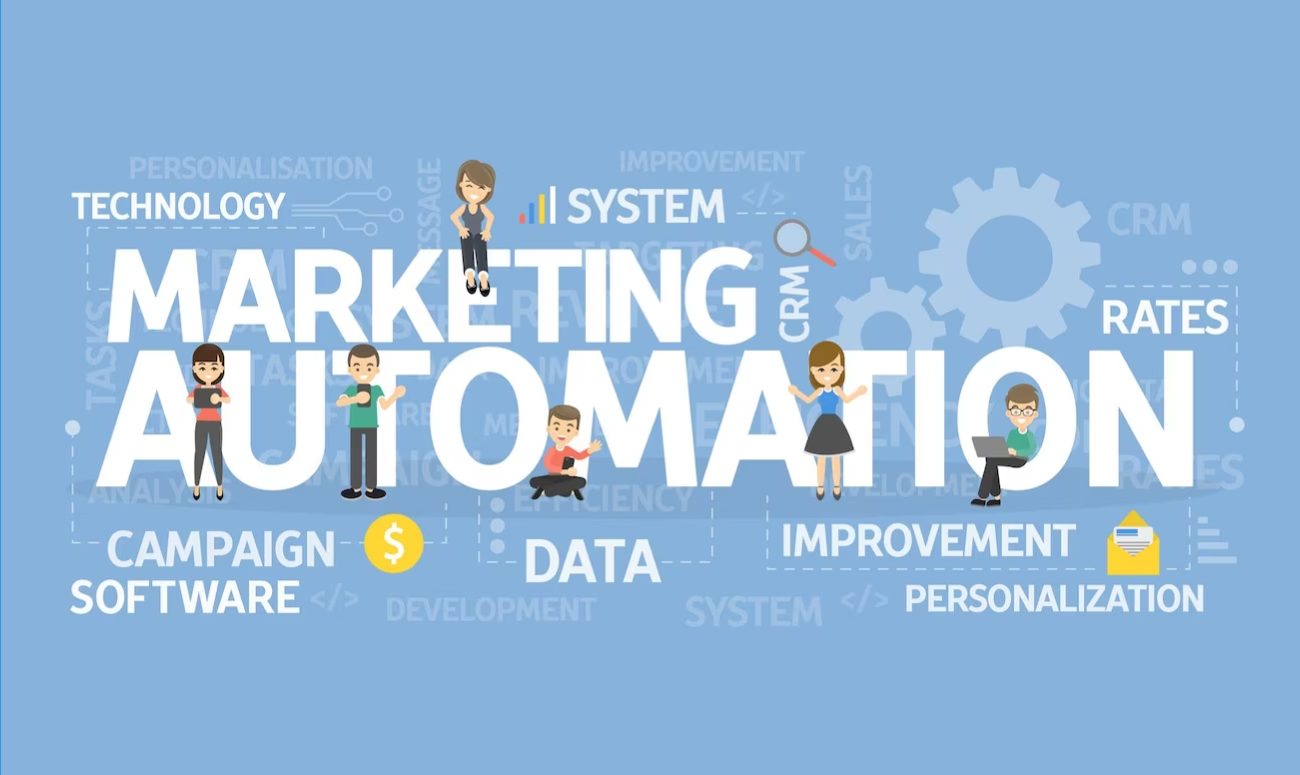
Here are some critical steps to building an effective marketing automation campaign:
Marketing automation is a powerful tool that businesses use to streamline their marketing efforts and improve conversion rates. It involves the use of automated workflows to guide leads through various stages of the buying process, from initial awareness to a successful sale. In order to build an effective marketing automation campaign, several key steps are necessary:
Define your target audience
Before you can begin creating content or building workflows, you need to identify exactly who you are trying to reach. Take the time to develop buyer personas that describe your ideal customer, including their demographics, interests, and pain points.
Create valuable content
Once you know who you are targeting, you can start developing content that will be of interest to them. This could include blog posts, white papers, videos, or other types of content that help educate your audience and build trust.
Build landing pages and forms
In order to capture leads, you will need landing pages that are designed to convert visitors into leads. These pages should have clear calls to action and forms that collect key information from your visitors.
Set up automated workflows
Once you have leads entering your system, you can begin building automated workflows. These workflows are designed to move leads through different stages of the buying process, providing them with valuable information and nudging them towards a sale. Workflows can be triggered by a variety of actions, such as form fills, website visits, or email opens.
Use lead scoring
Lead scoring is a process by which you assign a numerical value to leads based on their behavior and engagement with your content. This helps you prioritize your efforts and focus on the most qualified leads.
Qualify leads for sales
Once a lead has reached a certain threshold in terms of their engagement and behavior, they can be passed on to the sales team for further qualification and nurturing. This is where the final push towards a sale is made.
Monitor and refine
Finally, it is important to continually monitor and refine your marketing automation campaign. This involves reviewing metrics like open rates, click-through rates, and conversion rates, and making adjustments as necessary to improve your results.
Overall, building an effective marketing automation campaign requires a combination of strategic planning, compelling content, and technical know-how. By following these steps and continually refining your approach, you can create a powerful marketing engine that drives revenue growth and customer acquisition.
How to Measure the Success of Your Marketing Automation Campaign?

Several metrics must be evaluated to determine the success of an effective marketing automation campaign. These metrics provide insight into the campaign’s performance and can help identify areas for improvement. The primary metrics that should be measured include email open, click, bounce, spam, unsubscribe rates, leads generated, top landing pages, page visits, email open rate, and click rate.
An open email rate measures the percentage of recipients who opened the email. A high open rate indicates that the subject line and content in the email were engaging and resonated with the recipient.
Click rates measure the percentage of recipients who click on any links within the email. A high click rate means the email could drive action from the recipients.
On the other hand, a high bounce rate indicates that the email was not successfully delivered to the recipient’s inbox.
A high spam rate suggests many recipients mark email content as unwanted or irrelevant.
A high unsubscribe rate indicates that the content is not aligned with the interests or needs of the audience.
Leads generated are another critical metric to evaluate the success of a marketing automation campaign. This metric measures the number of individuals who have shown interest in the company’s products or services and provided their contact information for further engagement. A high number of generated leads indicates that the campaign effectively attracts and engages the target audience.
Landing page visits are yet another vital metric to evaluate the success of a marketing automation campaign. A landing page is a standalone web page designed to capture prospects’ attention and convert them into leads. Tracking the number of visits to the landing page helps determine the campaign’s effectiveness in driving traffic to the page. A high number of both landing pages and page visits indicates that the campaign message resonates with the target audience and that the landing page offers value for the visitors.
In conclusion, measuring the success of a marketing automation campaign involves a comprehensive evaluation of various metrics that reflect engagement, lead generation, traffic, and conversion.
Comparing Email Marketing and Marketing Automation
Email and marketing automation are two common strategies to drive conversions, engagement, and business growth. Although both approaches rely on delivering personalized messages to target audiences, they have distinct differences that can make them more or less effective depending on the situation.
The Main Differences Between Email Marketing and Marketing Automation
Definition
Email marketing is sending marketing messages to a group of customers or prospects. Email marketing can promote a product or service, build relationships with customers or prospects, or generate leads for a sales team.
Marketing automation is using software to automate marketing tasks and workflows. Marketing automation can automate various tasks, including email marketing, social media campaigns, lead generation, and customer segmentation.
Cost
One of the main differences between email marketing and marketing automation is cost. Email marketing automation is typically much cheaper than marketing automation, as it does not require expensive software or tools. Additionally, email marketing can be done using free or low-cost, marketing tools alone, such as MailChimp or Constant Contact. Marketing automation, on the other hand, typically requires using paid software, such as HubSpot or Pardot.
However, there is an affordable marketing automation CRM software called EQUP that provides quality services and drives visible results. It is a premium suite that offers a variety of options, including sales CRM(customer relationship management), marketing CRM, and an all-in-one suite. It is a highly effective tool that requires a minimal amount.
Ease of Use
Another difference between email marketing and marketing automation is the ease of use. Anyone can do email marketing with a basic understanding of email software. . Marketing automation software, on the other hand, requires a more advanced level of knowledge to be used effectively. Additionally, some email marketing platforms and automation software can be complex and difficult to learn.
Functionality
Email marketing and marketing automation also differ in terms of functionality. For example, email marketing tools is typically limited to sending emails and tracking opens and clicks. Businesses can create campaigns with a few clicks(drag and drop option) Marketing automation, on the other hand, offers a much more comprehensive range of features and capabilities, such as lead scoring, website tracking, and CRM integration.
Engagement level
Email marketing typically involves sending out promotional emails to a pre-existing email list, with the aim of driving traffic to a website, promoting a product or service, or increasing brand awareness. While email marketing can be effective, it tends to lack the personalisation and engagement that marketing automation offers.
Marketing automation, on the other hand, is a more sophisticated and comprehensive marketing strategy that involves the use of automated workflows, landing pages, social media and targeted messaging.
Personalisation
Email marketing campaigns are typically less personalized than marketing automation campaigns, as they rely on the marketer’s ability to segment the email list and send relevant content to specific groups of customers. Marketing automation, however, allows for extremely targeted messaging and personalized content, with the ability to track individual customer behaviour and adjust messaging accordingly.
Complexity and content type
The complexity and content type involved in email marketing and marketing automation also differ. Email marketing is often less complex than marketing automation, as it typically involves creating a single email campaign or series of campaigns to be sent to a pre-existing email list with content only for emails. On the other hand, marketing automation involves more planning, strategy and execution, as it involves creating automated workflows and personalized messaging. with a variety of channels and different content types.
Reporting
Reporting is another area where email marketing and marketing automation differ. Email marketing typically offers basic reporting features, such as open and click-through rates. Marketing automation, on the other hand, often provides more advanced reporting features that can help marketers track their return on investment (ROI).
Scalability
Scalability is another crucial difference between email marketing and marketing automation. Email marketing is typically limited to a certain number of contacts or subscribers, making it difficult to scale up a campaign without incurring additional costs. On the other hand, marketing automation is designed to be scalable from the start, making it easy to add more contacts or subscribers as needed.
Which One is Beneficial: Email Marketing or Marketing Automation?
Businesses often have to choose between email marketing and marketing automation. Both have unique advantages and disadvantages, and no one-size-fits-all solution exists. However, by understanding the context of the organization and its marketing goals, it can determine which technique is more beneficial for its needs.
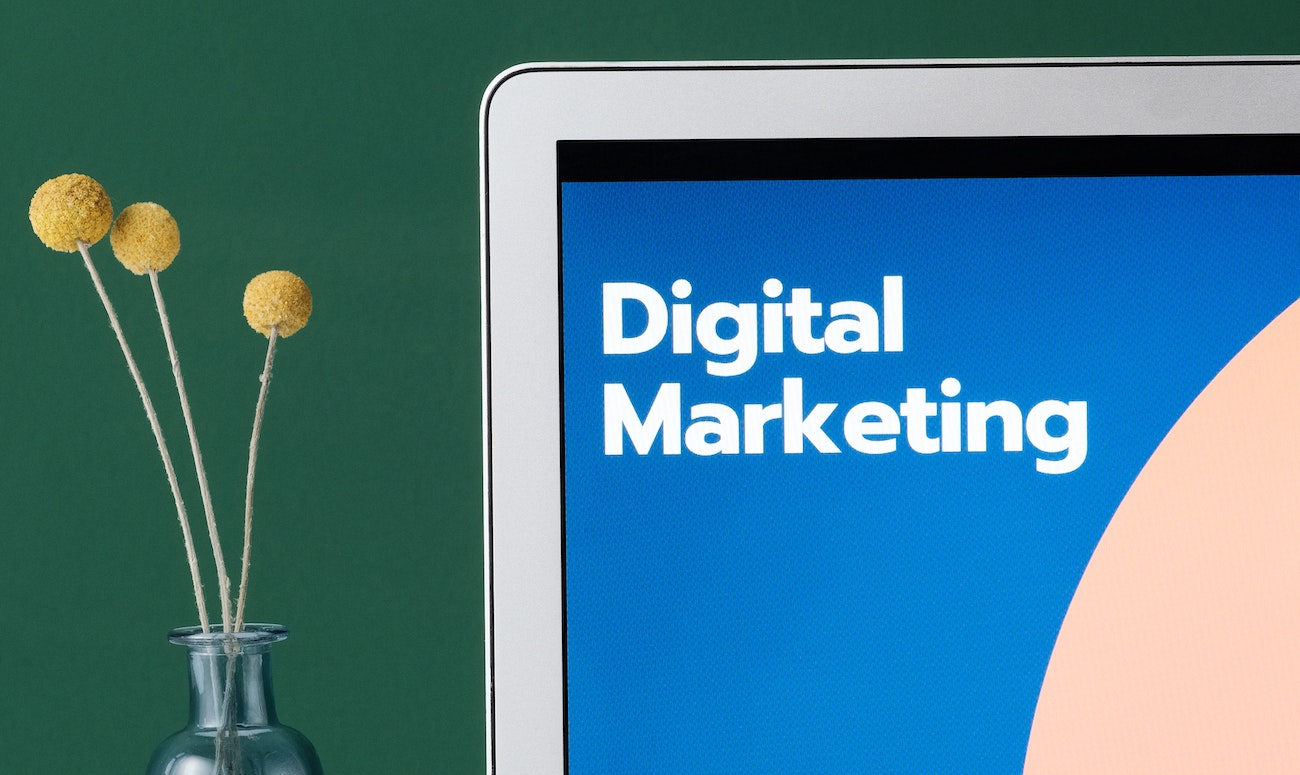
Email marketing is a direct communication channel with consumers that companies can use to reach a large audience. It involves sending messages to their inboxes, usually with promotional content designed to encourage them to take a particular action. As a result, email marketing can benefit small and medium-sized businesses seeking an affordable and straightforward way to communicate with their customers. Additionally, email marketing is easy to implement and provides a high ROI.
For instance, according to a study by HubSpot, email marketing generates over $38 for every dollar spent, making it a cost-effective way to drive sales. Additionally, according to Campaign Monitor, companies that use segmented campaigns can achieve a 760% increase in revenue.
On the other hand, marketing automation is all about using software to automate marketing activities, such as email marketing, customer segmentation, and, social media marketing. As a result, marketing automation can help organizations improve their marketing efficiency and scalability, allowing them to engage with many consumers in a personalized manner.
Furthermore, the marketing automation tool provides data insights into customer behavior and engagement, enabling organizations to the customer journey and make data-driven decisions to increase customer loyalty.
For example, research by Forrester shows that businesses that implement marketing automation can see a 10% increase in their sales pipeline contribution while reducing their marketing overhead by 12%.
In conclusion, choosing between email marketing and marketing automation depends on an organization’s context and marketing goals. Email marketing is an affordable and effective way to connect with customers directly, while a marketing automation system provides scalability and data insights to drive ROI. Therefore, companies must evaluate their options and combine both techniques to achieve the desired results.
Tips for Choosing Between Email Marketing and Marketing Automation
Choosing between email marketing and marketing automation can be challenging, depending on various factors. Therefore, we will explore tips to help businesses choose between email marketing and marketing automation effectively.

Understand Your Goals and Objectives
Businesses need to understand their goals and objectives before choosing between email marketing and marketing automation. For example, email marketing suits companies that want to promote their products or services to their subscribers, build brand awareness, and increase sales. Marketing automation, on the other hand, is suitable for businesses that want to nurture leads, streamline their marketing activities, and improve customer engagement.
Consider Your Budget and Resources
Budget and resources are essential in choosing email marketing or marketing automation. Email marketing is relatively affordable and requires minimal resources compared to marketing automation. Marketing automation, on the other hand, requires a significant investment in software, personnel, and training.
Evaluate Your Target Audience
The target audience is another critical factor when choosing between email marketing automation and a marketing automation solution. Email marketing software works well for small businesses whose target audience is relatively small, and they can manage their email campaigns effectively. a Marketing automation platform, on the other hand, works well for companies with a broad target audience, where it’s challenging to manage campaigns manually.
Analyze Your Marketing and Sales Funnel
Analyzing your sales and marketing funnel can help determine whether to choose email marketing or marketing automation. Email marketing works well in the awareness and interest stages of the funnel, where the primary goal is to build brand awareness and generate leads. Marketing automation, on the other hand, works well in the consideration and purchase stages of the funnel, where sales teams can nurture leads and close sales more efficiently.
Conclusion:
Choosing between email marketing and marketing automation software depends on various factors, such as goals and objectives, budget and resources, target audience, and sales and marketing funnel(determine customer journey). By considering these tips, businesses can decide which email marketing automation technique to use and improve their overall marketing performance.
Wrapping Up
In conclusion, many benefits come with either email marketing CRM or marketing automation solution. Both can be great tools to help propel your business and drive more sales. However, remember that it’s essential to analyze which one is well suited for your business needs and create content tailored to the audience you want to reach. Ultimately, email marketing and marketing automation platforms can help you establish meaningful relationships with prospects and customers. Stay organized and focused on producing inventive campaigns that reflect your company values to ensure you’re reaping all the benefits of successful email marketing campaigns.
If you’re looking for a robust email marketing CRM and sales CRM platform, and system with powerful email marketing features and capabilities tailored for small businesses, click here – you won’t regret it! With thoughtfully crafted campaigns and creative strategies, your emails will resonate with recipients, resulting in higher customer loyalty, customer retention rates, and even better customer care management solutions.